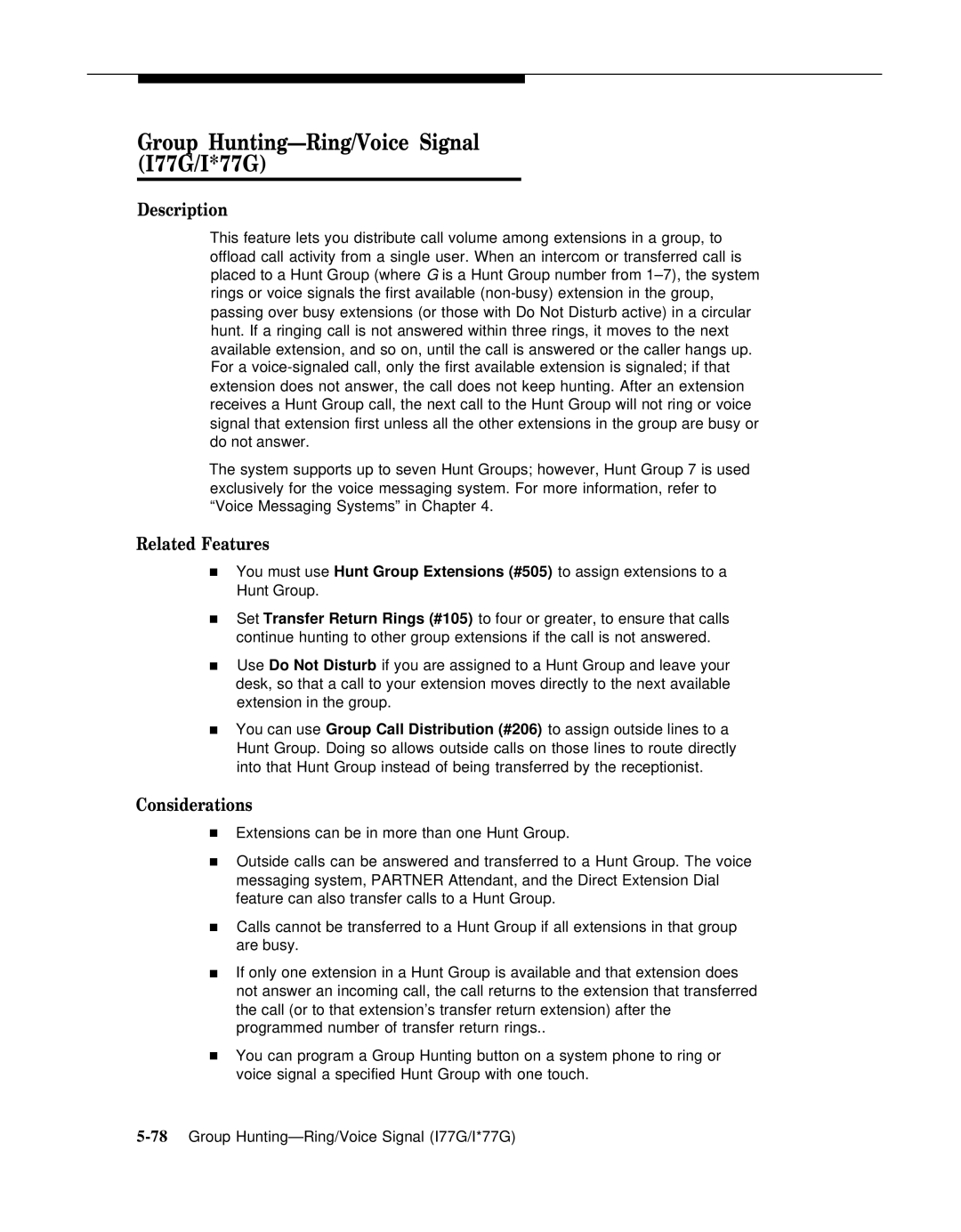
Group Hunting—Ring/Voice Signal (I77G/I*77G)
Description
This feature lets you distribute call volume among extensions in a group, to offload call activity from a single user. When an intercom or transferred call is placed to a Hunt Group (where G is a Hunt Group number from
The system supports up to seven Hunt Groups; however, Hunt Group 7 is used exclusively for the voice messaging system. For more information, refer to “Voice Messaging Systems” in Chapter 4.
Related Features
■You must use Hunt Group Extensions (#505) to assign extensions to a Hunt Group.
■Set Transfer Return Rings (#105) to four or greater, to ensure that calls continue hunting to other group extensions if the call is not answered.
■Use Do Not Disturb if you are assigned to a Hunt Group and leave your desk, so that a call to your extension moves directly to the next available extension in the group.
■You can use Group Call Distribution (#206) to assign outside lines to a Hunt Group. Doing so allows outside calls on those lines to route directly into that Hunt Group instead of being transferred by the receptionist.
Considerations
■Extensions can be in more than one Hunt Group.
■Outside calls can be answered and transferred to a Hunt Group. The voice messaging system, PARTNER Attendant, and the Direct Extension Dial feature can also transfer calls to a Hunt Group.
■Calls cannot be transferred to a Hunt Group if all extensions in that group are busy.
■If only one extension in a Hunt Group is available and that extension does not answer an incoming call, the call returns to the extension that transferred the call (or to that extension’s transfer return extension) after the programmed number of transfer return rings..
■You can program a Group Hunting button on a system phone to ring or voice signal a specified Hunt Group with one touch.
